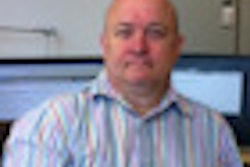SAN FRANCISCO - Regular mammography screening was not an important factor behind a 14% reduction of breast cancer mortality in Sweden starting in the 1980s, according to data presented on September 8 at the American Society of Clinical Oncology (ASCO) Breast Cancer Symposium.
The study, by Dr. Per-Henrik Zahl of the Norwegian Institute of Public Health in Oslo, questioned the impact of mammography on the decline in mortality, instead attributing the drop to improved therapy such as tamoxifen. The study uses the same data that formed the basis for a 2008 paper that Zahl said offered evidence that some breast cancers "spontaneously disappear" if not treated -- an indication that many women are being overtreated for breast cancer.
In the new study, Zahl and colleagues compared 18 years of breast cancer mortality data for two groups of women: those diagnosed in the first six years of Sweden's nationwide mammography screening program, and those diagnosed during a six-year period that included the last four years before the program began and its first two years.
"The introduction of a nationwide mammography screening program in Sweden in 1986 was associated with a 50% persistent increase of breast cancer incidence (including carcinoma in situ)," Zahl and colleagues wrote. "Whether screening has been instrumental in a recent decline in the breast cancer mortality remains an open question."
The test group included 328,927 women who were ages 40 to 69 when first invited to screening. On average, the women in an age-matched control group (317,404) were born four years earlier than the women in the test group. Zahl's team obtained the numbers of incident invasive breast cancers in each county from the Swedish Cancer Registry (in-situ cancers were excluded) and the corresponding breast cancer deaths from the Swedish Causes of Death Registry.
"The strength of this staggered design is that the two groups are almost identical with respect to risk factors," Zahl told AuntMinnie.com during his poster presentation. "Moreover, since the women in the control group were invited [to screening] at the end of the six-year period, the lead time was of similar [length] in both groups, and we can therefore compare mortality."
After 18 years of follow-up, the mortality reduction was 14% in the test group, according to the study abstract; 10% of this difference occurred in the first five years after diagnosis, which reflects improved medical treatment tools for breast cancer, according to Zahl.
"I developed my own intuitive statistical method that adjusts for lead time to study the specific mortality of cancer, and what I've done with the Swedish data shows the truth of what happened when [that country] started its screening program," he said. "The difference in mortality rates after five years is almost the same as that after 18 years, and the differences develop immediately after diagnosis. All mortality reduction in Norway and Sweden can be explained by improved treatment in the '80s and '90s."
Other studies, however, have given credit to both screening and adjuvant therapy as contributing to the decline in breast cancer mortality in developed countries. For example, in a 2005 study by Berry et al in the New England Journal of Medicine, the authors wrote that the combination of screening and treatment together -- rather than either variable alone -- contributed to a decline in the death rate from breast cancer in the U.S. between 1975 and 2000.
Zahl has presented controversial findings at ASCO's Breast Cancer Symposium before. Two years ago, he shared data with symposium attendees from a paper published in 2008 in the Archives of Internal Medicine that suggested some breast cancers spontaneously regress and would otherwise become harmless if they weren't detected on screening mammography (Vol. 168:21, pp. 2311-2316). That paper's conclusions came from both a study using Norwegian data and from the Swedish study data Zahl used in this year's presentation of breast cancer mortality rates.
Does screening increase surgical rates?
A related study poster presented on Friday that Zahl co-authored with colleague Dr. Pål Suhrke, of Oslo University Hospital, investigated whether the introduction of organized mammography screening in Norway led to more aggressive breast cancer surgery in three different age groups.
Suhrke and Zahl obtained aggregate incidence and surgical treatment data for women treated for ductal carcinoma in situ (DCIS) or invasive breast cancer from the Norwegian Cancer Registry. They calculated rates of breast operations (mastectomy plus breast-conserving therapy) and rates of mastectomy only for three age groups: 40 to 49, 50 to 69, and 70 to 79.
The two researchers presented changes in rates from a prescreening period (1993 to 1995) to a screening introduction phase (1996 to 2004) and then to a screening period (2005 to 2008) as hazard ratios that compared women who had been invited to mammography screening and those who had not, according to the study abstract.
From the prescreening period to the screening period, the annual breast operation rate increased by 70% (from 180 to 306 per 100,000 women per year in the invited age group of 50 to 69 years). The increase in the annual breast operation rate for women in the noninvited age group of 40 to 49 years was 8%, from 133 to 144 per 100,000 women per year. Suhrke and Zahl found an 8% decline in the annual breast operation rate for women in the older, noninvited age group of 70 to 79 years, from 227 to 214 per 100,000 women per year.
Does this mean that the increased surgeries were unnecessary? Most definitely, Zahl told AuntMinnie.com.
"We think those are the cancers that will spontaneously regress -- that 70% is what we would call overdiagnosis," he said. "Almost all the increase in breast cancer rates and surgery in Sweden and Norway can be explained by [the advent of screening] mammography."
As for the screening period, mastectomy rates fell similarly in invited and noninvited women, according to Zahl and Suhrke; however, during this phase, the mastectomy rate was 31% higher in women ages 40 to 49 who had been screened compared to those who had not. Annual mastectomy rates increased in women invited from the prescreening period to the screening introduction period, from 156 to 167 per 100,000 women, compared with a decline from 109 to 91 per 100,000 women in the younger, noninvited group.
Recent decreases in mastectomy rates are probably due to adjustments in surgical protocols, Zahl and Suhrke wrote.
"Mammography service screening is associated with a marked increase in breast operation rates in the invited age group and also an increase in mastectomy rates," they wrote. "While overdiagnosis likely caused the initial increase in mastectomy rates and the overall increase in use of surgery in the age group subjected to screening, the more recent decline in mastectomy rates has affected all age groups and is likely to have been caused by changes in surgical policy."
Zahl expects the data from these two studies to shift screening mammography policy.
"[Our data show] that overdiagnosis is one of the major harms of mammography screening," he said. "Millions of women have been overdiagnosed and treated with lumpectomies and radiation -- which is so close to the heart it affects coronary vessels. That a lot of women have died of heart disease [as a result of radiation treatment] has been totally ignored. This could be one of the biggest scandals in modern medicine, the fact that millions of women have been treated with radiation therapy [for breast cancer] with no benefit."



















